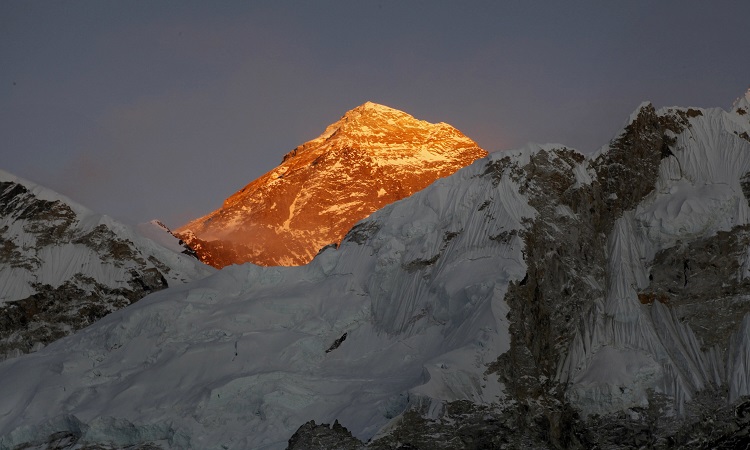Located at 8020 meters above sea level, the South Col glacier is the highest on Mount Everest. However, despite its elevation, the latest research shows that a thickness equivalent to several decades of accumulation is now lost each year. The results were published in the journal NPJ Climate and Atmospheric Science on February 3.
Chronicle of an end announced for the highest glacier of Everest
Increasingly hot and dry air, conducive to accelerated sublimation of the snow, is the cause of this significant decline. In the presence of a less generous white mantle, the surface of the glacier is then more exposed to solar radiation, hence an amplification of the loss of mass. In a new study, researchers from the University of Maine (USA) note that the glacier has thinned by 55 meters over the past twenty-five years, the equivalent of two thousand years of accumulation erased in barely a quarter of a century.
According to data from the two highest weather stations in the world and an ice core taken from the ice sheet, the imprint of climate change first appeared around the 1950s and really stood out during the 1990s. answers one of the big questions of whether the highest glaciers on the planet are affected by human-induced climate change,” notes Paul Mayewski, co-author of the paper. “The answer is a resounding yes, and very significantly so since the late 1990s.”
The retreat of the snowpack, an amplifying process
In their study, the scientists integrated all of these observations into a digital model in order to restore the dynamics of the glacier over the last decades. The simulations show that due to the significant sunshine that characterizes the region, the thinning of the snowpack can accelerate the rate of melting and sublimation up to twenty times. Indeed, by exposing the less reflective surface of the glacier, the albedo decreases and the energy available to melt or evaporate the water increases. Thus, at the current rate, researchers expect the glacier to disappear completely within a few decades.
“Climate predictions for the Himalayas suggest continued warming and loss of glacial mass,” said Mariusz Potocki, lead author of the study. “Even the summit of Everest is affected by anthropogenic warming.” However, the removal of this ice located on the roof of the world has very concrete consequences. Among them are the growing tensions over the water supply for more than a billion people and the increased risk of avalanches and landslides in an area popular with tourists and thrill seekers.



